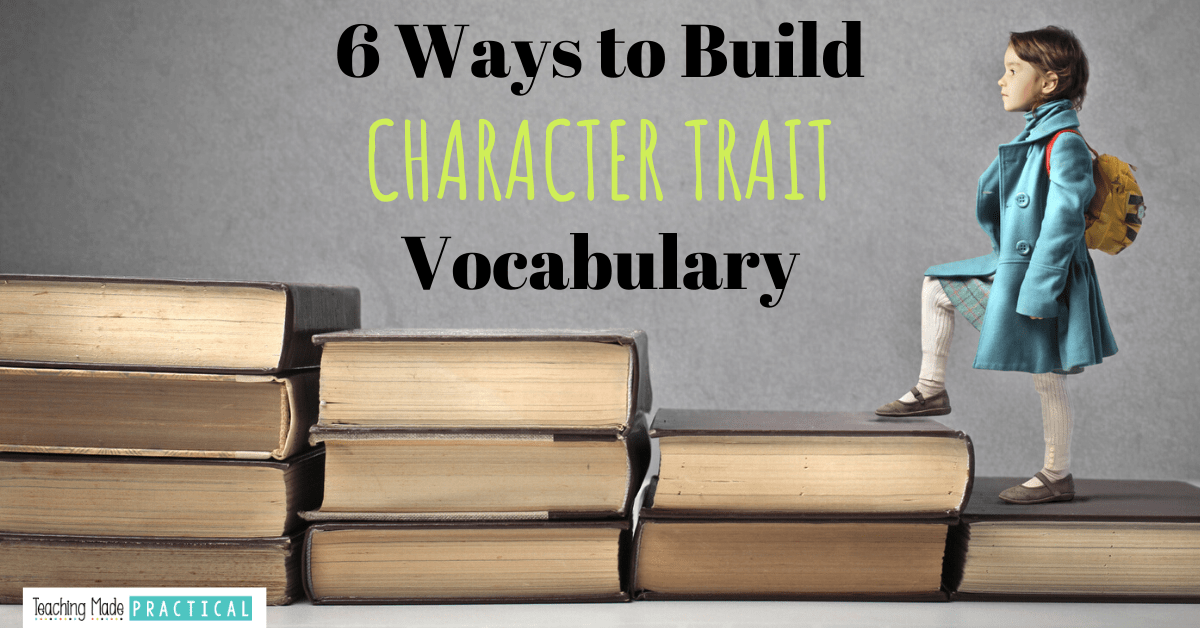
One of the most essential parts of teaching 3rd, 4th, and 5th grade students character traits is helping them build their character trait vocabulary. Students need to be able to describe character traits using precise and descriptive language.
The activity ideas below make a great addition to any character trait lesson plan, and will help your students build their vocabulary.
6 Activity Ideas for Developing Character Trait Vocabulary
1. Utilizing Character Trait Lists
If you do a google search for "character trait list," you'll find a variety of options. I have created several of my own Free Character Trait Lists as well. The list that is sorted by synonyms can be incredibly helpful for students to use as a reference.
These types of lists can be very useful when planning different activities to build students' character trait vocabulary. For many of the activities listed below, having a character trait list will come in very handy.
You can download these Free Character Trait Lists to use in your own classroom as you teach a character trait unit.
2. Asking Would You Rather Questions
This is a fun twist on an old favorite. Use "Would You Rather" questions to get upper elementary students thinking carefully and discussing the meanings of different character traits. This works best when there is not one obvious answer.
Some sample character trait "Would You Rather" questions could be:
- Would you rather be patient or reliable?
- Would you rather be irresponsible or thoughtless?
- Would you rather be bossy or lazy?
- Would you rather be generous or cooperative?
- Would you rather be brilliant or unselfish?
- Would you rather be meddlesome or deceitful?
As you create these questions, make sure and choose character traits that will help introduce your students to new vocabulary.
Side note: Using "Would You Rather" Questions is a fun way to practice comparing and contrasting as well.
3. Using Character Trait Word Sorts
Word sorts require students to think about the meaning of different character traits. This activity works best for words that have a variety of synonyms, like the words:
- happy and sad
- nice and mean
- clean and messy
You could use index cards to write down several synonyms for the words "happy" and "sad," mix the words up, and then have students sort the words into 2 groups. Make sure you include several synonyms that might be unfamiliar to your students.
For a no prep option, use my Building Character Traits Vocabulary resource that contains several already created cut and paste word sorts, as well as a variety of other activities that will help you build your students' character trait vocabulary.
4. Build a Character Trait Word Wall
Word walls are usually used to help students with spelling and beginning sounds. However, upper elementary students will benefit more from word walls that will help build their vocabulary.
There are several different ways you can set up a character trait word wall in your classroom. For example, you could have students help you sort by synonyms.
Or, have students think about connotations of different character traits and create a continuum. For instance, if you have a list of words that mean funny, you could have students sort the words based on which word means the MOST funny and which word means the LEAST funny.
Find out more on creating a character trait word wall - and download a free printable - here.
5. Have Students Use a Thesaurus
Having students use a thesaurus is a simple but effective way to get them introduced to new words that describe character traits.
You can do this old-school, where 3rd, 4th, and 5th grade students have to look up words alphabetically in a "real" book. Or you can have students practice their "googling" skills with an online thesaurus.
6. Identifying Character Traits Within Short Text
Building your students' character trait vocabulary isn't going to be useful unless they can actually apply it to text, but starting with longer text can sometimes be overwhelming. Task cards are a low prep solution for this problem.
I created these Character Trait Task Cards to help assess my students' ability to identify character traits within shorter text and use evidence from the text to defend their reasoning.
These task cards provide students with a word bank so students are required to think about the meaning of character traits like "patriotic," "humorous," and "clumsy." The answer sheet also requires students to use evidence from the text to defend their answer.
You might also be interested in these other resources and ideas for teaching character traits!
Looking for a no prep way to build character trait vocabulary? Save over 20% on this Character Traits Bundle, which includes:
Why Explicitly Teaching Character Trait Vocabulary is Necessary
I learned a valuable lesson about the importance of teaching character trait vocabulary my first year teaching.
Around October, my students had to take their first district mandated practice test. Fortunately, the test only covered skills that we had already covered, one of which was character traits.
I was pretty confident - we had created character trait anchor charts, completed several fun character trait writing activities, used evidence from the text to identify different character traits, filled in character trait graphic organizers, and examined characters in books whose traits had changed over time. I just KNEW my students were going to rock the character trait portion of the practice test. I envisioned myself being praised by my principle, who was telling everybody she knew how this first year teacher she had hired was amazing.
My dreams came to a crashing halt as soon as my students took the test.
Most of the character trait questions looked something like this:
This character can best be described as:
a. generous
b. brave
c. nice
d. humble
Many of my students couldn't even read a word like "generous." Even if they could read it correctly, they probably didn't know what it meant. And the only students who knew what "humble" meant were the students who had Charlotte's Web as a read-aloud in 2nd grade.
The majority of my students chose either "nice" or "brave" as their answer simply because they recognized those words. And I was surprised how many students had misconceptions about what the word "brave" actually meant.
I realized that all of the in depth study we had done on character traits was almost useless if my students had a limited character trait vocabulary, so I tried a variety of different methods to help build that vocabulary. Below are several that I used successfully in my classroom.
Or, if you're looking to save some time and energy while still providing your students with engaging lessons, this Building Character Trait Vocabulary Resource might be perfect for your classroom.
Check Out this Character Trait Freebie
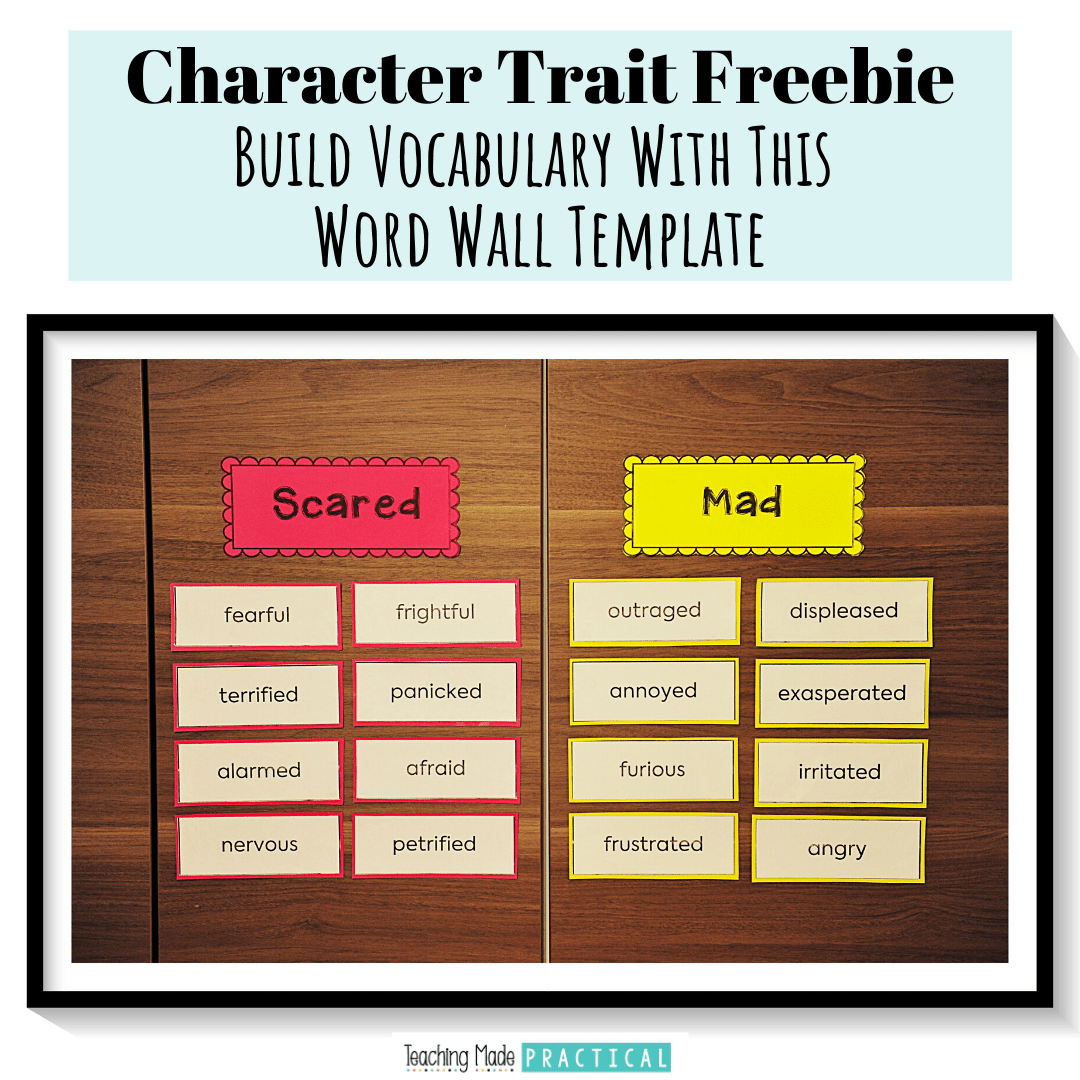


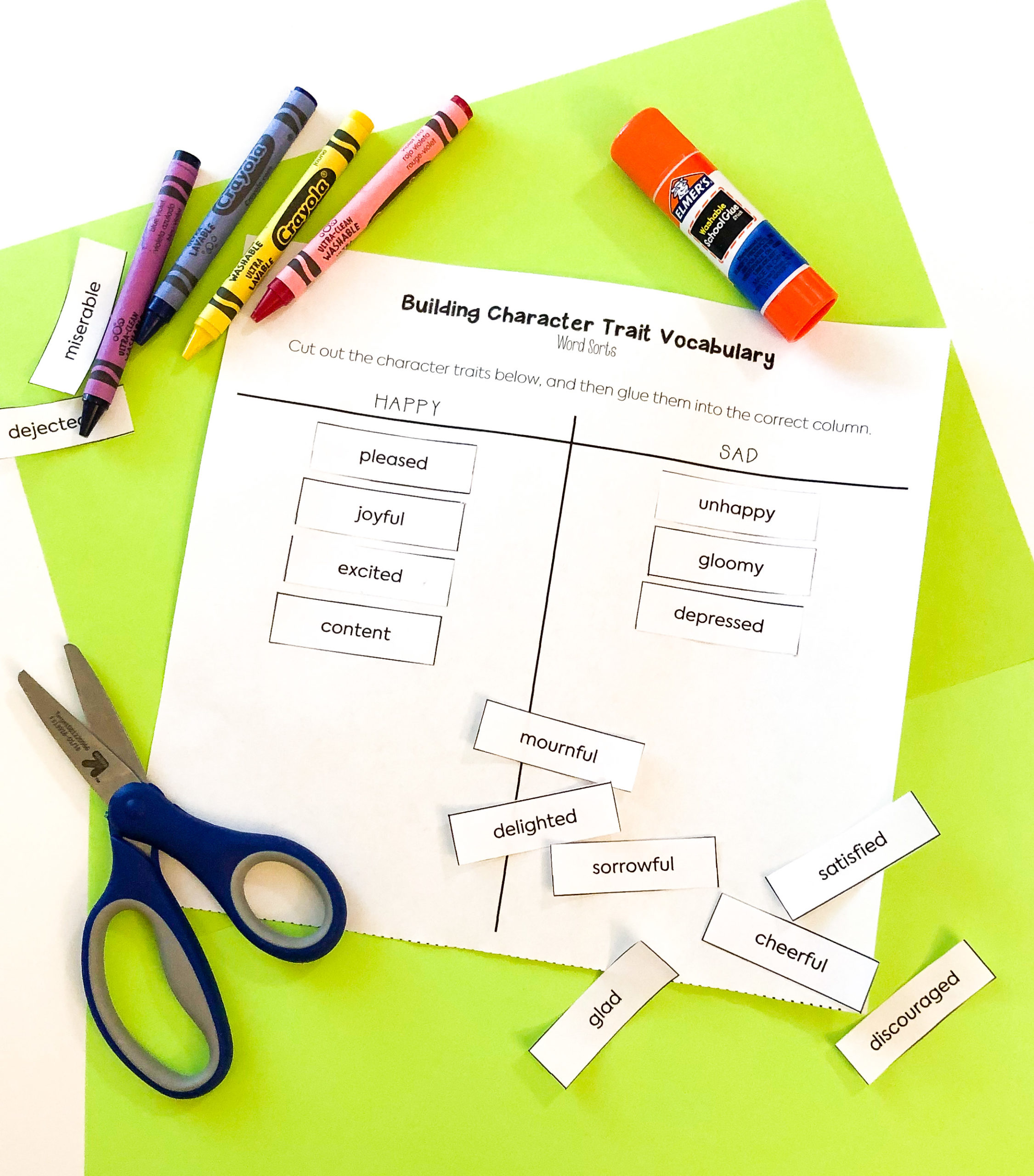
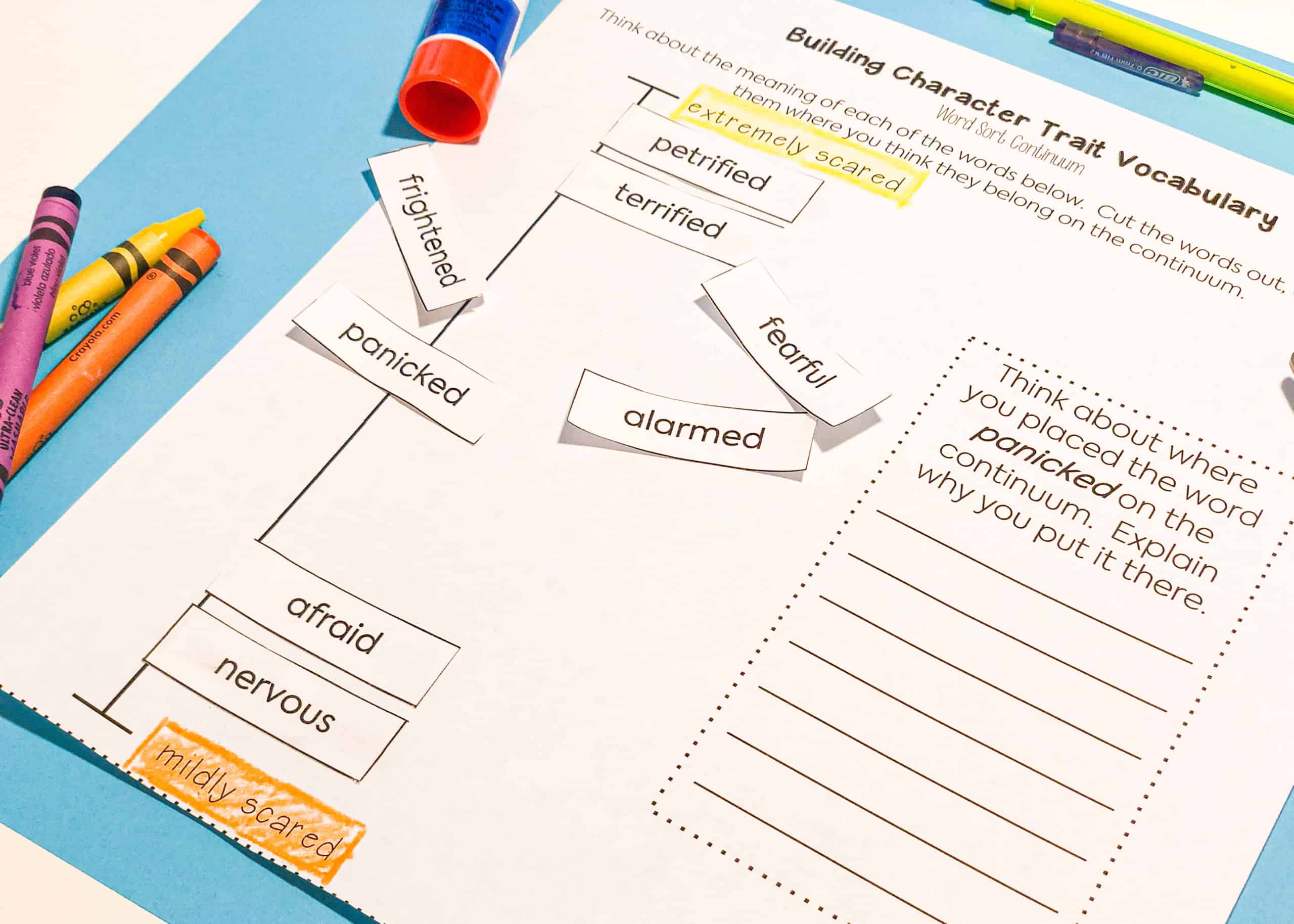

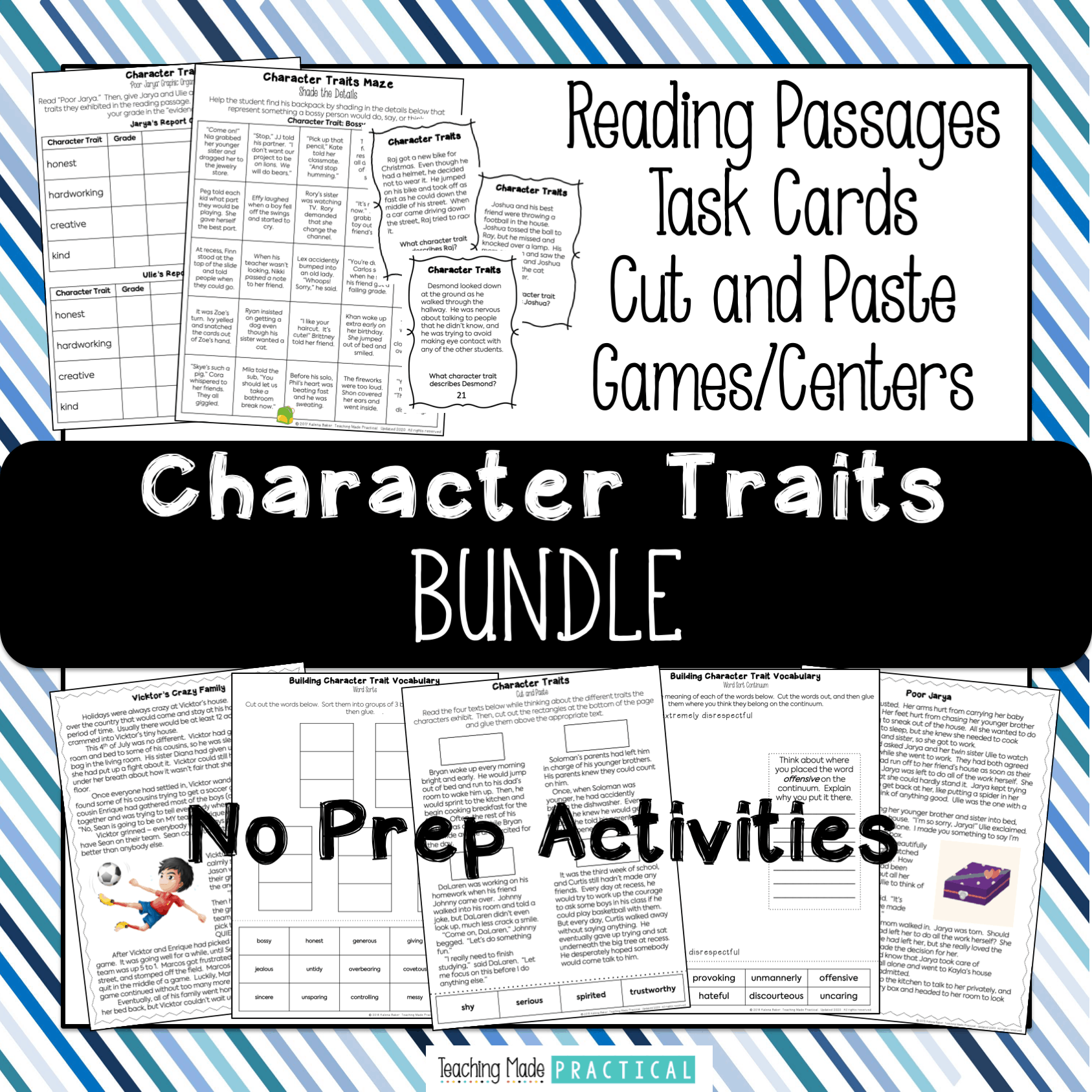
Comments 1
This is a really great tool! I will be getting some inspiration from these! Thanks 🙂